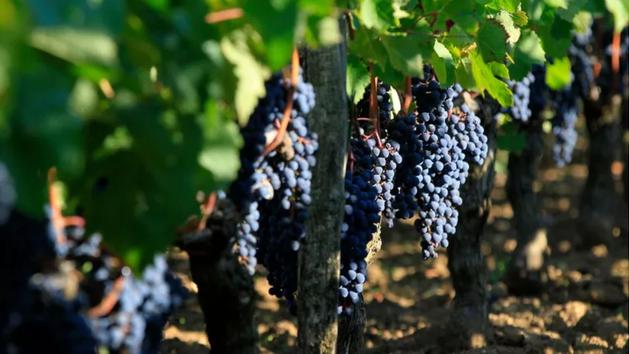Encouraged by climate change, winegrowers are resuscitating the wine industry in Ile-de-France, thanks in particular to the “
Protected Geographical Indication
” (IGP)
label
, obtained in May, which allows them to sell local production that is still in its infancy on a very competitive.
One Saturday in September, Jean-Michel Bourgoin harvests with family and friends the fruit of “
three years of hard work
”, from planting vines on this land in Blunay (Seine-et-Marne) to harvesting the first grapes.
This hectare and a half of vines borders the hillsides owned by his grandmother, whose last vines disappeared in 1992. The 52-year-old landscaper evokes with nostalgia “
the small family vineyard
”, the landscapes of his childhood and these “
wines that the old ones exchanged
”.
A little further on, Patrice Bersac, president of the Ile-de-France winegrowers' union, conscientiously tastes the purplish juice of a Merlot to come and is enthusiastic about these "
centuries of history which are being reborn
" .
Read also: Tax exemption: the vine, a safe bet?
Because the historic wine-growing Ile-de-France, "a
territory larger than the administrative Ile-de-France
", has long been the largest vineyard in France, narrates the manager.
Born in Roman times, it began to decline in the 19th century;
powdery mildew, downy mildew, phylloxera, the 1970s war, land urbanization and competition from southern wines got the better of the 40,000 hectares of vines in Ile-de-France.
The winegrowers therefore sold their plots and the rural landscape was transformed.
Reclaiming hectares
For twenty years, a few enthusiasts, including Patrice Bersac, have tried to restore this vineyard, plot by plot.
"
Modest
"
objective
of the union which currently unites around sixty winegrowers: to reclaim 1,000 hectares by 2030. Thus, in May 2020, the wines of Ile-de-France obtain the protected geographical indication (PGI) - formerly "
vins de pays
”from the national institute of designations of origin (INAO).
This recognition guarantees "
the quality
", "
the origin
", "
the practices
" but also "
a strong presence and notoriety
" on a European scale, rejoices Louis-Victor Charvet, expert of the Bettane + Desseauve wine guide.
It also allows winegrowers to sell their production at a better price, notes Antoine De Clermont-Tonnerre.
A wise strategy while production costs increase, notes this wine advisor.
In a highly competitive market, "
France must make the choice of high-quality production
", he argues.
The winegrowers hope that the attraction of Ile-de-France consumers for a local IGP will enable them to curb the overall decline in wine consumption, which has been halved in 50 years at the national level, explains Mr. Charvet, who underlines the “
very good report IGP price-quality
”.
Still discreet, the Ile-de-France vineyard "
aims to double or triple quickly
", estimates the expert.
Framed by labels, it can even “
become a leading vineyard again
”.
Because if the Ile-de-France region does not produce wines "
of great complexity
", they give birth to "
quality and superior wines
", reassures Louis-Victor Charvet.
"
Joy
" and "
pride
" of the winegrowers
More sunshine and higher temperatures: global warming is benefiting winegrowers in the Ile-de-France region who achieve better grape maturity and sweeter wines, explains the expert.
The resulting hazards (frost, precipitation, etc.) are quickly evacuated by Antoine De Clermont-Tonnerre: "
It's the winegrower's job to adapt
".
Thanks to this "
exceptional
"
climate
, Jean-Michel Bourgoin has not subjected any chemical treatment to his six grape varieties, but "
this will not always be the case
", warns Patrice Bersac.
At the press, surrounded by vats on which are inscribed "
Gamay
", "
Pinot noir
", "
Chardo
", Patrice, Antoine and Jean-Michel taste the slightly milky juice of the freshly pressed grapes.
After "
750 hours a year spent in the vineyard
", the three men feel "
joy, pride
", before the first bottle of new wine in October.

